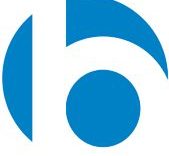
by Guest Blogger – James Hunt
Having spent the last two years working on a large infrastructure project being delivered through an alliancing model, I am a little disappointed in myself for only just ‘clicking’ on one of the great advantages to this approach. An Alliance is subject to the corporate processes and procedures of a number of organisations meaning that the Alliance itself can pick and choose which processes to follow, eliminate those that are not efficient and/or appropriate, alter others to suit their needs and get on with the business of producing a fantastic outcome.
The ability of an Alliance to make decisions quickly and with full authority is a huge advantage. There is a sense of dynamism and ‘project first’ thinking that is sadly absent in a number of Head Offices, where conservatism and limiting structures can dominate. With much exposure to the difficulty of navigating the endless corporate obligations, political power plays, rigid structures and quite frankly, barriers to effective project work that most companies seem to possess; this aspect of alliancing is a refreshing change.
So often the corporate needs for assurance and systems can stifle the drive and innovation that is so essential to organisational and project success. A statement of Kym William’s has stayed with me, that “Companies build a rod for their own backs”. All systems and processes can just as easily be a barrier to our success as an aid. A constant review of systems, potentially from a ‘Stop doing, Keep Doing or Start Doing’ type review is essential to ensuring that our people do not become overburdened by process, and our decision making systems remains lean and willing. Questions need to be asked: “If we are adding something, has anything else become redundant that we can stop doing?”, “Is this really necessary?”, or that old favourite from the great Sir Peter Blake of America’s Cup fame: “Will it make the boat go faster?”.
Establishing this environment; where project needs trump corporate process, has taken many other efforts, chiefly a leader who has the appetite to make decisions and commit fully to the chosen option, but also a Board, made up of representatives from all the partners of the alliance, being prepared to invest that trust in the Project Manager. It would be easy for a Board to insist that all corporate needs are prioritised, to bring egos, stubbornness and rigidity to the table. Fortunately, in this instance this has not happened and the Board has prioritised the needs of the project first. The project did however, require a balance where the corporate objectives and international standards in terms of health and safety, cost control, quality and other systems were being exceeded rather than compromised by that freedom. If those objectives were being compromised then the cost of that freedom would be too high.
The speed and dynamism of decision making in projects is incredibly important, and the enjoyment of having worked on a project where this maxim has been placed at the heart of the operation provides great benefit to my personal satisfaction.
James Hunt is a Guest Blogger and Client of BRS working for McConnell Dowell as a Risk Manager.



